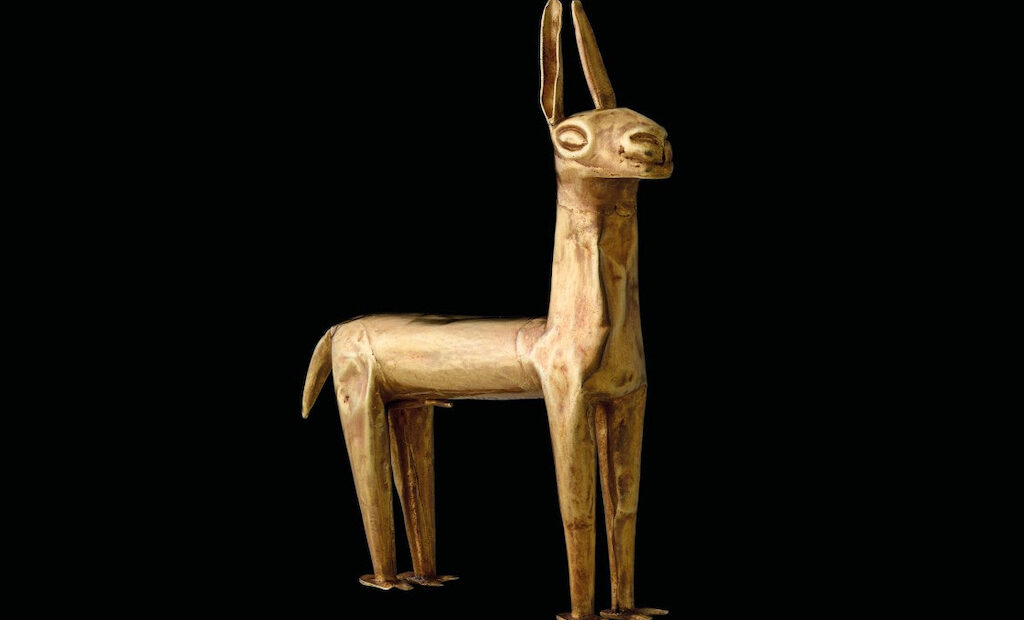Peru: A Journey in Time at the British Museum

This exhibition’s opening in November 2021 at the British Museum marked the bicentennial of Peru’s independence from colonial rule. Displaying objects from the museum’s collection as well as those borrowed from the country, Peru: A Journey in Time takes the viewer to a culture and civilisation that really could not be more alien from Britain’s own. From agriculture to worship to architecture, even to ways of counting and thinking about time, the ancient people of the arid, mountainous and tropical climates that make up the modern country, approached their lives in different ways.
The timeline of this show covers from around 3,500 BC up until the arrival of colonisers in the 1500s. There is a diagram to show how these people viewed time: not in the linear way modern civilisations do, but as concentric circles of past, present and future with people and objects at the centre. It’s probably impossible to fully get one’s head around such a fundamentally different starting point for viewing the world, but the exhibition tries. Pulling on a vast amount of information and research, it tries to bring to life a thoroughly mysterious subject.
It shows the geoglyphs of the Nasca people: giant artworks made by removing the top layer of soil to carve lines into the earth, only visible from above. A three-minute video filmed by drones, shows these mysterious, gigantic images as the creators intended them to be seen. The largest is two kilometres long. There are ceramics of some of the giant images too – a “human killer whale” is especially memorable, given human-like attributes such as holding a knife, portrayed as though returning victoriously from battle. Much of the artwork is hallucinatory, owing perhaps more than a little to the fact that chewing coca leaves and imbibing hallucinogenics was central to daily life. What’s striking is how modern some of the ancient artwork is: the vibrancy of the natural dyes used in the textiles, the vivacity of the depictions. There is a bold sculpture of a contortionist, who had special status in Andean society. A tiny gold statue of a llama captures all of that creature’s character in its jauntily erect ears alone.
The exhibition is thorough – no aspect of the Andean life is left unexplored. There are funerary shirts on display, woven bags for carrying the prized coca leaves, ceremonial headdresses and jewellery with diagrams showing how they would have been worn. All this is in a dimly lit space piping out ancient Andean music, adding to the mind-bending journey: fascinating and just a little frightening.
Jessica Wall
Peru: A Journey in Time is at the British Museum from 11th November until 20th February 2022. For further information visit the exhibition’s website here.
























Facebook
Twitter
Instagram
YouTube
RSS